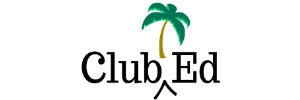Creating a cohesive developmental edit
The goal of every editor should be that of providing a cohesive developmental edit for a manuscript.
A lot of the skill in developmental editing is just keeping your mouth shut. Not every single thing you notice needs to be commented upon. It doesn’t make the author’s revision go more effectively when you’re nitpicking about a hundred unrelated problems.
Pick a few problems that, if addressed, would make a significant difference to the ms and focus on those. Even better if you can shape those into a coherent, cohesive overall edit.
For example, maybe the plotting feels implausible, maybe the protagonist’s character arc is flat, maybe you have trouble feeling immersed in the story world, maybe you don’t really get a sense of who the protagonist is at all.
Cohesive developmental edit example
These are different problems that could be addressed in the DE, but imagine if you could link them together: these are all problems that ultimately relate to how the protagonist is drawn.
*If the protagonist is not driving story events and acting and reacting to what happens, then the plotting will feel implausible because the author is just shoving the protagonist around the plot like a chess piece.
*If the character arc is flat, we’re not as invested in the protagonist.
*If the protagonist is the viewpoint character and we’re not experiencing the story world through their perspective, we’re going to have trouble feeling immersed in the story world.
*And, finally, if the author hasn’t drawn the protagonist clearly, we’re not going to get a sense of who they are at all.
The positive spin on a cohesive developmental edit
Imagine the author receiving a cohesive edit that says, “the main thing to address is the protagonist.” And then supplies recommendations.
Versus an edit that says, “There are problems with the plotting, there are problems with the character development, there are problems with the setting.”
One feels a lot more overwhelming than the other, but both address the same issues.
Other Helpful Content
-
Time for a Secondary Niche?
Editors with some experience often come to me with concerns about sustaining their business. They’re usually in a particular niche, such as copyediting mystery fiction, and they’ve stalled in some way – they don’t have quite enough clients and they’re not making quite enough money. The Benefits – and Drawbacks – of Niches We know…
-
Expand into Book Doctoring and Ghostwriting
If you’ve been a developmental editor for any length of time, you’ve likely encountered an author who just wants you to write the book for them. Or, you’ve encountered a manuscript that was in such disrepair that it required a herculean effort to fix it, dropping your hourly rate down to pocket change. As a…
-
Writing Reader Reports
Publishing companies and literary agents often use readers to screen the manuscripts they receive to help them decide if a particular manuscript is worth further consideration. I’ve written a short, one-lesson self-paced class to show you the ins-and-outs of writing reader reports as a first reader or screener. The class covers: The class also includes…
Join the Club!
New to story editing? Begin at the beginning.






